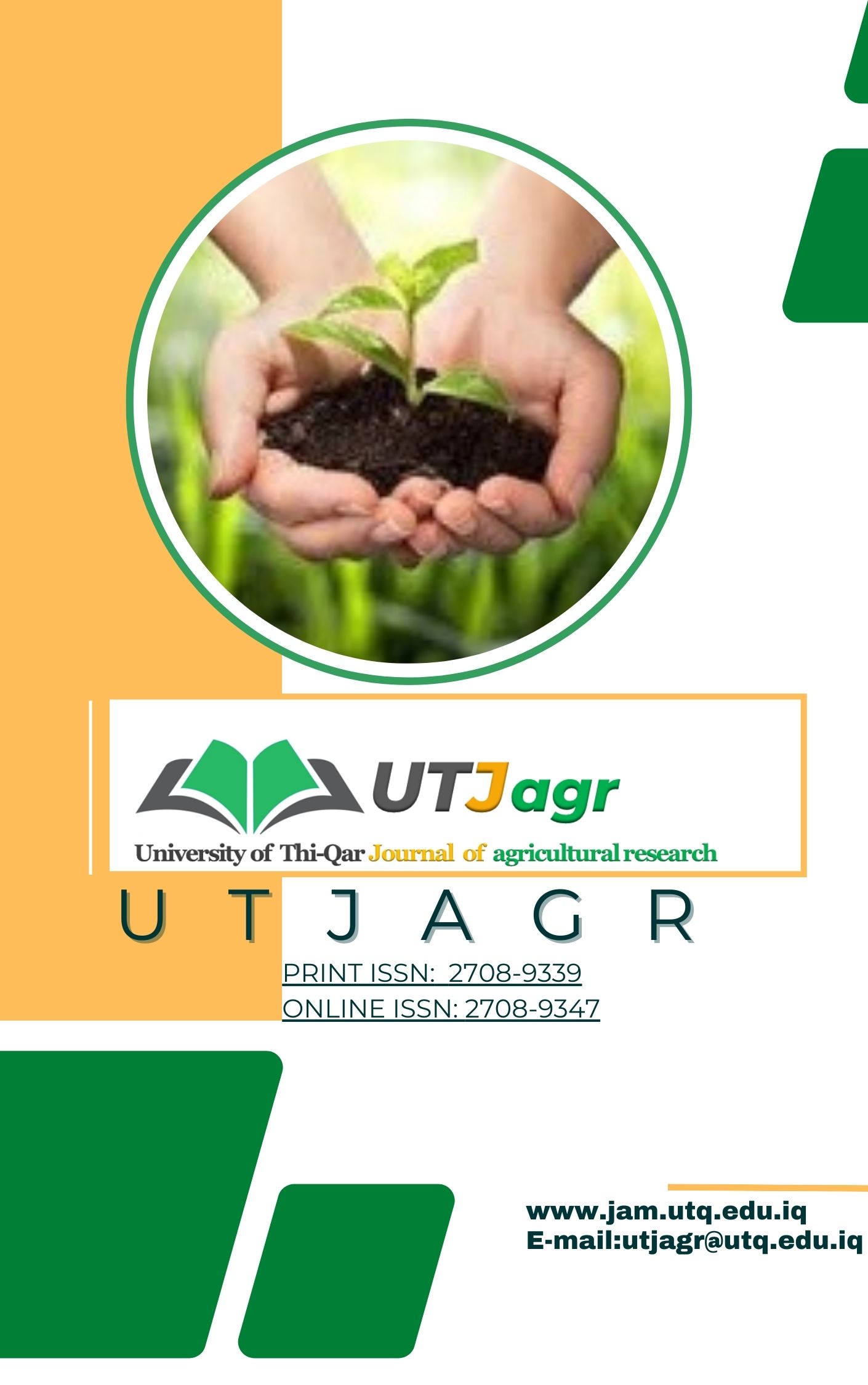Abstract
The experiment was carried out at the Agricultural Research Station of the College of Agriculture and the Marshlands /
University of Thi-Qar, located in Al- Mustufawia for the agricultural season (2019-2020). The study was the effect of
cultivar and organic and mineral fertilization on the qualitative and quantitative characteristics of cucumber crops grown
in greenhouses, and applied according to the factorial experiments inside the split plots, using the complete randomized
sectors with three replications. The factors of research were: two cultivars (Datis and Sakata) occupied the main plots,
three levels of organic fertilization occupied the secondary plots which included control treatment O1, cow manure
O2(2.457 tons of greenhouse-1
) and poultry manure O3(3.713 tons of greenhouse-1
) and the third factor was four levels of
mineral fertilization (NPK) including control treatment M1, M2 (2.250 kg. dunam-1
), M3 (3.350 kg. dunam-1
), and M4
(4.450 kg. dunam-1
) which occupied the sub-plots. The results showed that Datis cultivar significantly outperformed
Sakata cultivar in yield per plant, total yield, leaf content of nitrogen and phosphorus, and fruit content of carbohydrates,
reaching (1.402 kg. plant-1
, 24.24 tons .greenhoues-1
, 2.2517%, 0.4069%, 1.2876%) respectively. On the other hand, the
treatment of organic fertilizer O3 recorded a significant effect in the following crop traits such as leaf area, total yield, leaf
content of nitrogen and phosphorus, and fruit content of carbohydrate, reaching (178.0 cm2
, 24.36 tons. greenhouse-1
,
2.5017%, 0.4608%, 1.3561%). Respectively compared to other treatments, total yield, leaf content of nitrogen and
phosphorus, reaching (180.1 cm2
, 25.88 t. greenhoues-1
, and 2.3478%, and 0.4561%) to other treatments. The treatment
M2 significantly outperformed in yield per plant (1.682) kg. plant-1
and treatment M3 significantly exceeded the fruit's
carbohydrate content, reaching (1.2930%). All the combinations among this study's treatments were compared to meet
their significant effecting on all traits.
University of Thi-Qar, located in Al- Mustufawia for the agricultural season (2019-2020). The study was the effect of
cultivar and organic and mineral fertilization on the qualitative and quantitative characteristics of cucumber crops grown
in greenhouses, and applied according to the factorial experiments inside the split plots, using the complete randomized
sectors with three replications. The factors of research were: two cultivars (Datis and Sakata) occupied the main plots,
three levels of organic fertilization occupied the secondary plots which included control treatment O1, cow manure
O2(2.457 tons of greenhouse-1
) and poultry manure O3(3.713 tons of greenhouse-1
) and the third factor was four levels of
mineral fertilization (NPK) including control treatment M1, M2 (2.250 kg. dunam-1
), M3 (3.350 kg. dunam-1
), and M4
(4.450 kg. dunam-1
) which occupied the sub-plots. The results showed that Datis cultivar significantly outperformed
Sakata cultivar in yield per plant, total yield, leaf content of nitrogen and phosphorus, and fruit content of carbohydrates,
reaching (1.402 kg. plant-1
, 24.24 tons .greenhoues-1
, 2.2517%, 0.4069%, 1.2876%) respectively. On the other hand, the
treatment of organic fertilizer O3 recorded a significant effect in the following crop traits such as leaf area, total yield, leaf
content of nitrogen and phosphorus, and fruit content of carbohydrate, reaching (178.0 cm2
, 24.36 tons. greenhouse-1
,
2.5017%, 0.4608%, 1.3561%). Respectively compared to other treatments, total yield, leaf content of nitrogen and
phosphorus, reaching (180.1 cm2
, 25.88 t. greenhoues-1
, and 2.3478%, and 0.4561%) to other treatments. The treatment
M2 significantly outperformed in yield per plant (1.682) kg. plant-1
and treatment M3 significantly exceeded the fruit's
carbohydrate content, reaching (1.2930%). All the combinations among this study's treatments were compared to meet
their significant effecting on all traits.
Keywords
cucumber
Cucumis sativus L
Mineral fertilization
Organic fertilization
